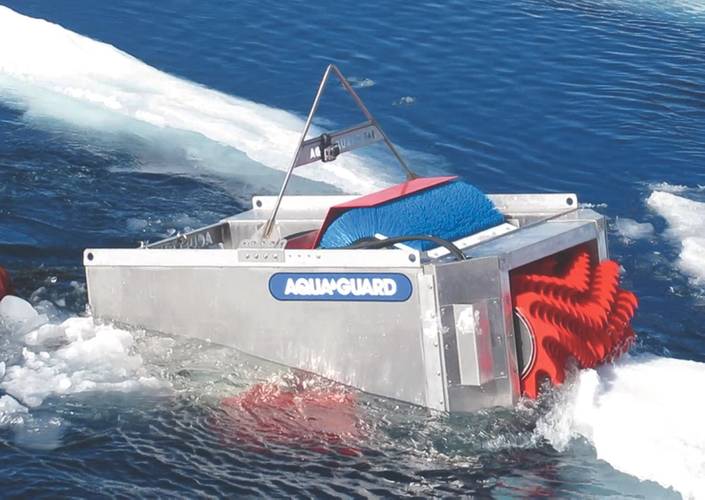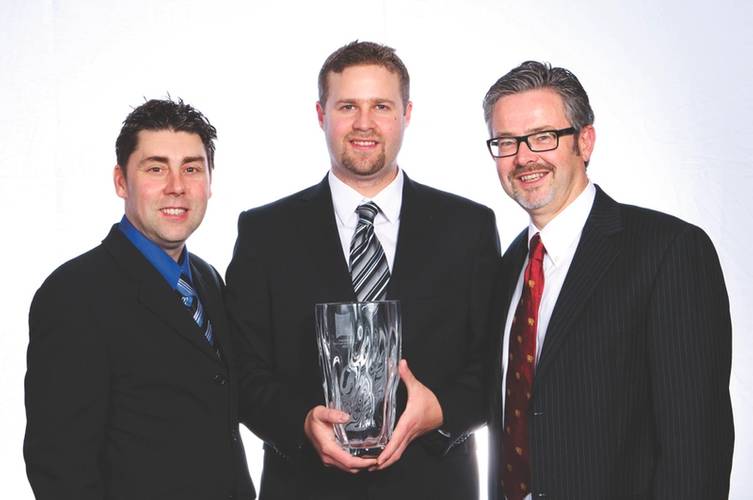The pace and quality of oil spill research in the United States typically ebbs and flows as a function of two, if not three important variables. First, after the 1989 Exxon Valdez grounding, there was a flurry of activity to ramp up oil spill research because it had been dormant for so long. The need was recognized, with plenty of money made available. Primarily, this research centered on conventional spill remediation techniques – for example, a tanker or barge spilling oil – and not much else. Predictably, when memory of the spill faded, so did interest in research and funding followed.
A new era of heightened focus on spill response research and testing started with the so-called Deepwater Macondo spill. Stakeholders quickly lamented the dearth of recent research. Even those who could point to what had been done since the Exxon Valdez, also couldn’t deny that much of this work was not well aligned with events and situations then happening in the U.S. Gulf of Mexico. Research had largely stopped a decade before. A new call went out for robust research, and this new commitment is delivering results.
Today, the chances of oil spills become more likely as previously permanent sea ice diminishes in the Arctic and as maritime activity in the region increases. To be ready, the U.S. Coast Guard places a high priority on developing options for recovering oil in the Arctic. To that end, an important research project took place this August during the Coast Guard’s annual science patrol aboard the cutter Healy, the United States’ newest and most technologically advanced polar icebreaker.
Arctic West Summer 1701
‘Arctic West Summer 1701’ started July 20 and concluded August 17 when the Healy returned to Seward, Alaska. The research agenda was extensive, including autonomous surface, underwater and aerial vehicles, an electrically powered shore transfer craft and a passive millimeter wave camera.
Critically, in addition, the research agenda included testing the capabilities of a self-propelled oil skimmer – the Aqua-Guard Triton RotoX – designed and built by Aqua-Guard, based in Vancouver. The Healy team wanted to evaluate the skimmer’s maneuverability, buoyancy and ability to move among broken ice. Ice floes present a fragmented and scattered seascape, adding a dangerous variable to an already challenging environment. In these conditions, oil that could otherwise be recovered may be inaccessible to crews and equipment.
“Recovering oil in broken ice is the challenging part,” Chief Petty Officer Angela Vallier, a member of the strike force team, said in a CG report. “We have proven technology in open water and proven technology in packed ice, but those technologies would be inefficient in broken ice.” During the trials, the skimmer easily propelled itself through the ice floes and its thrusters provided ample power, the CG reported. However, ice-cutting teeth, designed to chop the ice into small pieces, did not work as well as expected.
“The testing of these technologies is extremely important to ensure the capability to deal with an incident is available in the future should one occur,” said Scot Tripp, the chief scientist aboard the Healy during the skimmer trials. “Each time we test a technology, we get a better handle on its capabilities and its limitations.”
The testing was a joint effort between Coast Guard RDC, Coast Guard National Strike Force, Navy Supervisor of Salvage and Diving, the Oil Spill Recovery Institute of Cordova, Alaska, and Coast Guard Cutter Healy.
The Aqua-Guard RotoX Skimmer
Importantly, Aqua-Guard’s RotoX skimmer was not originally designed for Arctic operations. The Arctic equipment was a modification; an advancement of Aqua-Guard’s RBS-TRITON, or rotating brush skimmer, technology. The RotoX is designed to macerate (soften or separate a mixture); in this case, large oil solids, into constituent elements, then recovering the slurry and pumping it out of the water. Company co-founder and principal, Nigel Bennett, explained that the system is designed to break up and recover ultra-heavy oil/sludge floating islands.
Bennett said that his company became part of the Arctic West Summer 1701 expedition after Coast Guard staff from the Research & Development Center (RDC) viewed a video of the RotoX, operating in ultra-heavy oil. That video was presented at the International Oil Spill Conference in Long Beach, last May.
“RDC had solicited companies,” Bennett explained, “with the request to get an operational skimming system with thrusters to Alaska by mid-July for the 2017 Arctic Technology Evaluations, but no entity was able to fulfill the deadline request.”
Subsequently, Coast Guard personal contacted the Aqua-Guard team in Vancouver. Bennett said Aqua-Guard’s team “jumped on the opportunity to have a RotoX tested in ice” and they built and tested a skimmer modified for Arctic operations in time for the Healy’s departure. He said that given the machine’s history of successful operations in heavy oil, the next step was testing in ice. Regarding operations, company officials said “as long as it is safe for operation crews to be on deck, then our skimming system can be used.” RotoX recovers a complete range of oils, from light diesels to ultra-heavy crude. The system can be deployed from a trailer, skid or from a ship or barge.
Broad Based Coast Guard Research
To be fair, this is not the Coast Guard’s only ongoing ice-oil research. Other projects include a cage-management system that separates ice from oily water. Work is also ongoing in the Great Lakes, started in 2010. Coast Guard staff said that tests by the Bureau of Safety and Environmental Enforcement (BSEE), in a controlled facility, indicate that skimmers can be effective in up to about 30-40% ice if the system can get to the oil. After that, performance declines quickly with 60-70% of ice, again due to accessibility to the oil. Mobility – getting to the pollution – is critical.
As most mariners likely know, in the United States, oil cannot be deliberately spilled or discharged into open waters even for research and testing and, accordingly, the AWS 1701 expedition did not include actual oil recovery. And, the Healy’s 2017 expedition was in US waters. (Norway, reportedly, is the only country that allows such tests, but under strict controls.)
For this mission, the primary goal was to demonstrate the ability of the skimmer to (1) maneuver around larger icebergs and (2) using the dual onboard thrusters to displace smaller icebergs. Indeed, this up-close navigation worked as the skimmer moved itself into small pockets of water where oil would pool in the event of a spill. Actually, and to demonstrate how closely this natural environment was reviewed, the Healy team did find a tiny sheen of oil. They concluded it came from a hydraulic fitting. Quantity: a few drops only.
In an ice-strewn environment, the independent mobility of the oil recovery equipment is critical, so the cutter or icebreaker does not need to move, reposition or otherwise control the skimmer. When the icebreaker moves it changes the seascape, pushing the surrounding ice and potentially eliminating the chance to recover pockets of oil. Similarly, by remaining stationary, an icebreaker does not move itself into contamination. A remote skimmer can keep the icebreaker farther away from oil so the ship’s propellers or bow thrusters do not pull oil into the water column.
Summing Up & Looking Ahead
The initial Arctic RotoX mobility tests were encouraging. A Coast Guard news release on the project reports that “during the trials, the team discovered that the skimmer easily propelled itself through the ice floes and the thrusters provided ample power.” Aqua-Guard personnel were not aboard the Healy for the 30-day voyage. However, a technician did participate in installing the RotoX on the Healy and for training CG operators. Bennett said the RotoX system “met and exceeded expectations” regarding tests for maneuverability.
Coast Guard personnel prepared an “After Action Report” detailing the RotoX’s strengths and weaknesses, but the full text is not yet available. Initial reports noted some problems with the ice-cutting teeth designed to chop ice into small pieces. This part of the equipment requires further work. But in the Arctic, this could be a challenge of scale. Bennett noted that the “ice cutting mechanism is not intended to macerate icebergs.” Rather, current equipment is intended to “chop up smaller ice chunks into slush with the intention of positioning the skimmer into pockets of spilled oil.”
In the meantime, Bennett said that R&D continues, focusing on improving the ice cutting functionality. He said the data collected during the Arctic tests is invaluable for further development. Without saying when, Bennett predicted that “the system, with a few minor adjustments, will be ready for market with regards to arctic oil spill response as the standard RotoX is already on the market.”
Today, as in the post-Exxon Valdez and post-Macondo eras, there is a heightened state of awareness about environmental contamination in the undisturbed Arctic. This new awareness has propelled a quicker pace of research into better and more site-specific spill response techniques. Stakeholders understand that a spill in the Arctic would be catastrophic unless the tools are available to combat such an unwelcome crisis, should it come. To that end, efforts are underway in many sectors to ensure that spill equipment is viable, available and – critically – proven to work.
(As published in the October 2017 edition of
Marine News)























